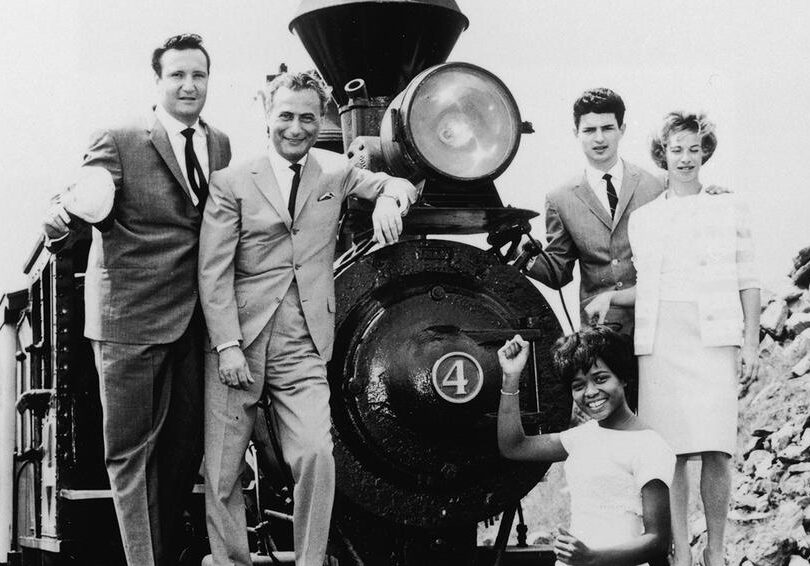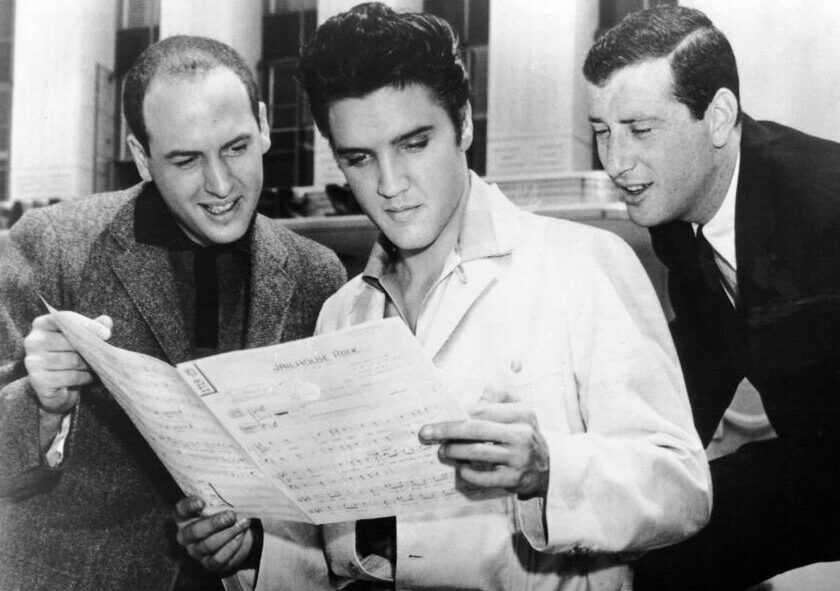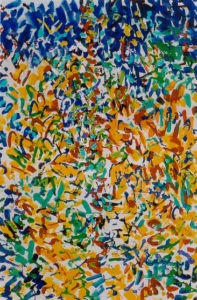The Brill Building Sound Heralded Rock ‘n’ Roll’s Arrival

Producers and music publishers Don Kirshner and Al Nevins, songwriters Gerry Goffin and Carole King, and Little Eva in front. Source: Frank Driggs Collection/Getty Images
In New York in the ’60s, the Brill Building was the successor to Tin Pan Alley.
Prologue: Tin Pan Alley
A century ago, the epicenter of America’s music industry was located in lower Manhattan on West 28th Street between 5th and 6th Avenues. Here is where songwriters and the nascent music publishing business set up shop starting in 1885. It was called Tin Pan Alley, an affectionately acerbic name the New York Herald gave to mean “cheap upright pianos.”
From the early century until World War II, Tin Pan Alley was a lively, colorful place filled with songwriters, vaudeville and Broadway characters, and “song-pluggers,” those pianists and singers who hustled sheet music for music publishers.
Prominent Tin Pan Alley composers were Irving Berlin, Hoagy Carmichael, George M. Cohan, George and Ira Gershwin, Oscar Hammerstein II, Scott Joplin, Cole Porter, and Johnny Mercer.
The Brill Building
The Brill Building Sound
As musical tastes changed after the war (cue rock ‘n’ roll!), Manhattan’s musical hub shifted several blocks north to the nondescript Brill Building at 1619 Broadway. A ’60s equivalent of Tin Pan Alley, the Brill Building sound became renowned for 1) advancing the craft of songwriting, 2)Â hiring youthful songwriters to write for their teenage peers, and 3) its specialized division of labor in which “songwriters worked closely with producers and A&R personnel to match selected artists with the appropriate songs.”
How Rock ‘n’ Roll Began, Reimagined
This method, cynically dubbed “assembly line pop,” changed the course of popular music by creating hundreds of quality songs.
Don Kirshner
At the center of it all was “The Man with the Golden Ear,” Don Kirshner. Along with partner Al Nevins, Kirsher founded a music publishing firm across the street from the Brill Building called Aldon (Al+Don) Music in 1958. Recognizing the burgeoning popularity of rock ‘n’ roll, Kirshner had big plans: supplying songs for this potentially lucrative market.
Aldon’s clients were the big record labels–Columbia, Atlantic, and RCA–which demanded recordings of high quality in great quantity. Kirshner and Nevins took this to heart while fashioning an ecosystem of song production.
Teenagers Writing for Teenagers
Kirshner rejected the “teen idol” approach that had become the industry standard, to wit: find a young singer with a bankable look and ply him or her with whatever song happened to be around. Instead, Brill Building practice took the opposite tack: 1) understand what the kids wanted and why; 2) realize that any singer could break through when given a strong song; and 3) concentrate on writing good songs that could be hits because they were written well.
That was the key: good songwriters. Kirshner and company were assembling the best and the brightest.
Brill Building Songwriters

Teenagers Carole King (songwriter) and Paul Simon (guitarist) at an RCA Victor recording session in 1959. Source: Sony Music Entertainment Archive
Carole King
Carole King seemed destined to be a premier Brill Building performer. She was raised in the same Brooklyn neighborhood as crooner Neil Sedaka. While attending Queens College, King met Gerry Goffin, who was to become her songwriting partner and husband. In 1959, Carole became pregnant with her first daughter Louise, and so King and Goffin quit college and took day jobs. They wrote songs together in the evening.
Three Early Sixties Rock ‘n’ Roll Influencers
The Goffin-King pairing was perhaps the most prolific in the Aldon stable. King composed the melodies (as did Sedaka, who partnered with Howard Greenfield). The songwriters were under constant pressure to produce hits. The Brill Building method might have been successful, but not without its warts, as Carole explained to Simon Frith and the Sociology of Rock:
Every day, we squeezed into our respective cubby holes with just enough room for a piano, a bench, and maybe a chair for the lyricist if you were lucky. You’d just sit there and write and you could hear someone in the next cubby hole composing a song just like yours. The pressure in the Brill Building was really terrific…Donny [Kirshner] would say, ‘We need a new smash hit!’-and we’d all go back and write a song and the next day we’d audition it for Bobby Vee’s producer.

Brill Building songwriting team Jerry Leiber and Mike Stoller unveil “Jailhouse Rock” (1957) for the King. Source: Michael Ochs Archive/Getty Images
Carole King and Gerry Goffin in 1960 wrote their all-time classic, “Will You Love Me Tomorrow,” a song incredibly frank for that period for its reworking of the old “will you respect me in the morning?”
Here is Carole King singing “Will You Still Love Me Tomorrow,” on February 10, 1971, for BBC In Concert, published by Carole King via YouTube:
Playlist
Here is a playlist of my Top 25 Brill Building hits, divided up by respective songwriters, based on research by Rolling Stone.Â
Gerry Goffin and Carole King:
Some Kind of Wonderful, the Drifters, 1961
Take Good Care of My Baby, Bobby Vee, 1961 (#1)
The Locomotion, Little Eva, 1962 (#1)
One Fine Day, the Chiffons, 1963
A Natural Woman, Aretha Franklin, 1967
Barry Mann and Cynthia Weil:
Who Put the Bomp, Barry Mann, 1961
I Love How You Love Me, Bobby Vinton, 1961
Blame It on the Bossa Nova, Eydie Gorme, 1963
Walking in the Rain, the Ronettes, 1964
You’ve Lost That Lovin’ Feeling, the Righteous Brothers, 1964 (#1)
Ellie Greenwich and Jeff Barry (w/Phil Spector)
Da Doo Ron Ron, the Crystals, 1963
Be My Baby, the Ronettes, 1963
Then He Kissed Me, the Crystals, 1963
Chapel of Love, the Dixie Cups, 1964 (#1)
River Deep, Mountain High, Ike & Tina Turner, 1966
Howard Greenfield and Neil Sedaka:
Stupid Cupid, Connie Francis, 1958
Calendar Girl, Neil Sedaka, 1960
Happy Birthday, Sweet Sixteen, Neil Sedaka, 1961
Breaking Up Is Hard to Do, Neil Sedaka, 1962 (#1)
Charms, Bobby Vee, 1963
Jerry Leiber and Mike Stoller:
Hound Dog, Willie Mae “Big Mama” Thorton, 1953
Yakety Yak, the Coasters, 1958 (#1)
Charley Brown, the Coasters, 1959
Kansas City, Wilbert Harrison, 1959 (#1)
Stand By Me, Ben E. King, 1961
Editor’s note: Part II of The Sound of New York, about the punk/new wave craze in the seventies, will appear after the calendar turns. –AG
















































































































